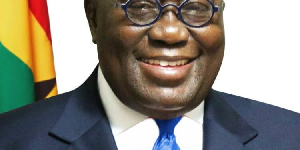
Following the Office of the President's release of President John Dramani Mahama's official photograph, some startling information has come to light.
The Akufo-Addo Bawumia administration reportedly spent GHS5.2 million in 2017 printing President Akufo-Addo's official portraits for use in ministry, department, and state agency offices, according to information obtained from Ghana Chronicles.
The official image of President John Dramani Mahama was released by the Mahama administration yesterday, January 9, 2025.
To avoid the transgressions of previous President Akufo-Addo, John Mahama has disclosed that his government has not and will not hire a company to create his frame photos.
In addition, their statement stated that Mahama's portrait will serve as the official image utilized by State Agencies, Ministries, and Departments.
The government has not and will not hire any business or person to create framed images of the official photograph in large quantities for distribution, according to a statement signed by president spokesperson Felix Kwakye Ofosu.
The statement went on to say, "President Mahama's leadership and dedication to the Ghanaian people are embodied in the portrait." It will represent our great country's ideals and objectives and act as a symbol of pride and solidarity.
A few of Ghanaians have also questioned the purpose of the president's images in government buildings.
Nonetheless, a military individual claims that the president's portrait in offices represents unity, leadership, and authority. The continuity of administration, respect for the president, and national identity are all emphasized. Numerous nations have a custom of honoring the head of state's role.